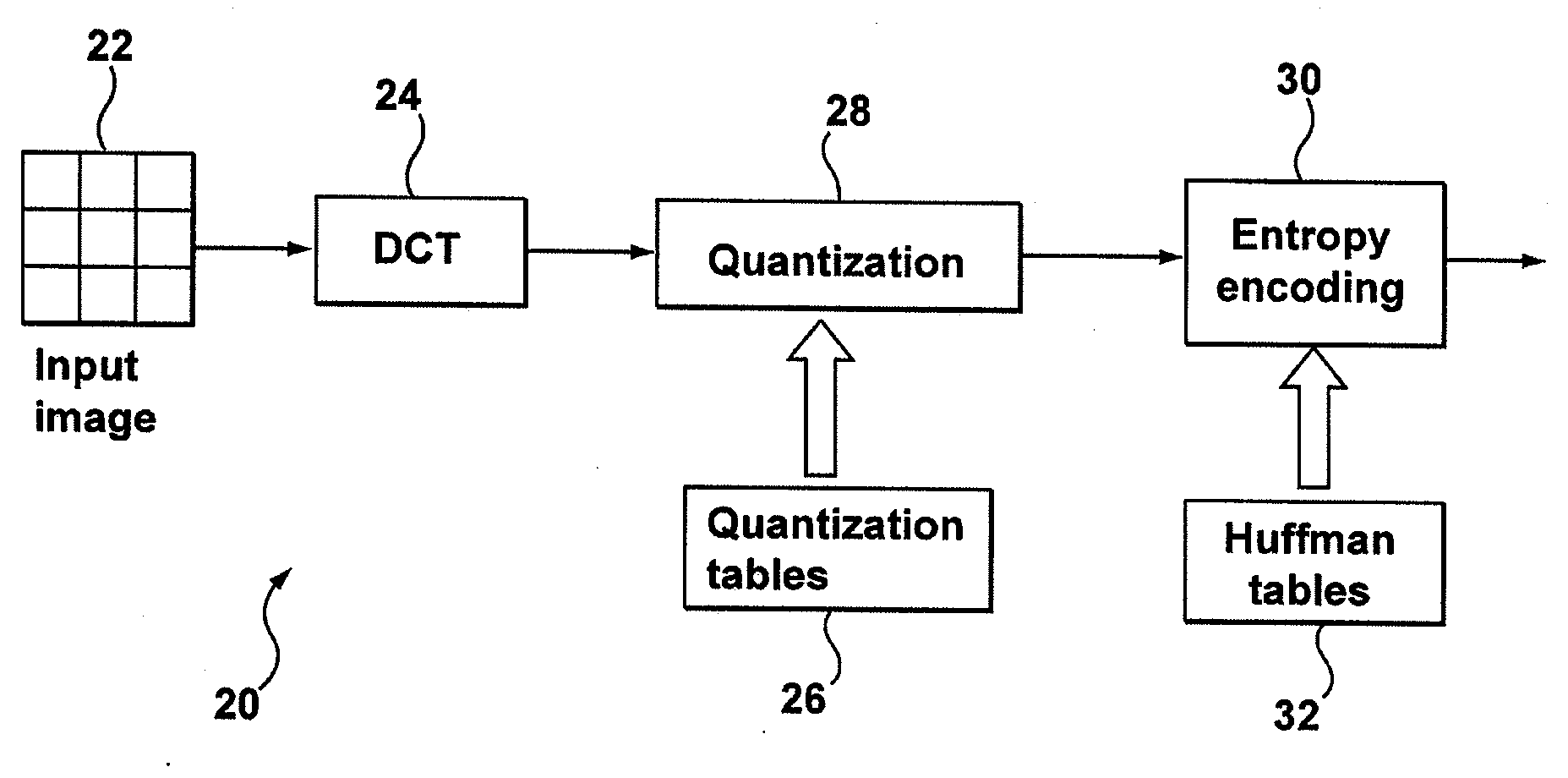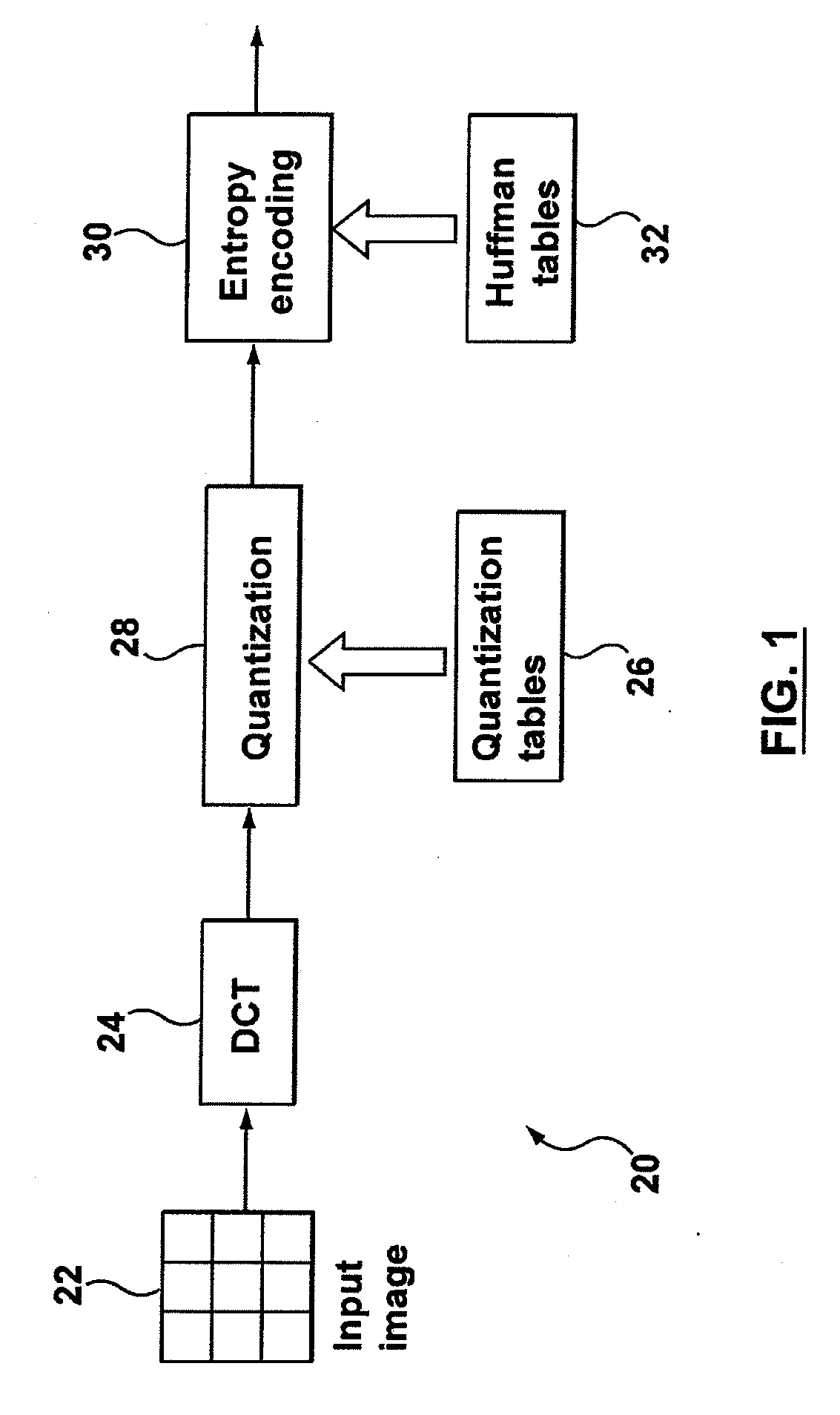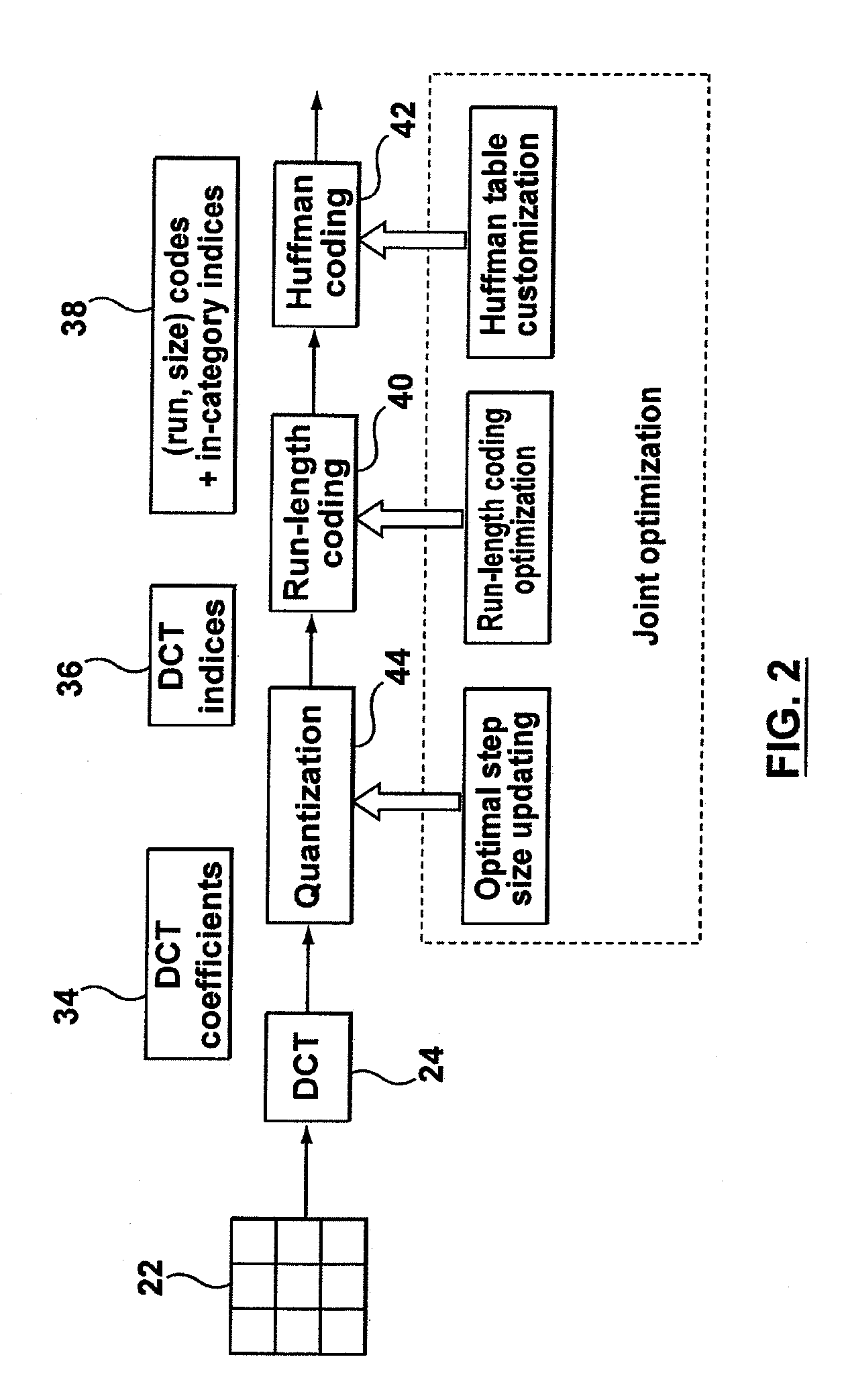Optimization of image encoding using perceptual weighting
a perceptual weighting and image encoding technology, applied in the field of optimal encoding of images, can solve the problems of difficult to obtain an optimal solution to (1) and (2) with classical bit allocation techniques, both aforementioned algorithms are very computationally expensive, and jpeg quantization lacks local adaptivity
- Summary
- Abstract
- Description
- Claims
- Application Information
AI Technical Summary
Problems solved by technology
Method used
Image
Examples
Embodiment Construction
[0028]In one aspect, the present application describes a method of optimal encoding for an image defined by image data. The method includes transforming a block of the image data to DCT coefficients; quantizing the DCT coefficients using a quantization table to generate quantized DCT coefficients, wherein the quantization table includes a plurality of quantization step sizes; and entropy coding the quantized DCT coefficients using zero run-length coding and a Huffman codebook to generate run-size pairs and indices. The quantization table, run-length coding and Huffman codebook are selected to minimize a Lagrangian rate-distortion cost function and the minimization includes iteratively determining the optimal run-size pairs and in-category indices for minimizing the rate-distortion cost function until the incremental improvement in the Lagrangian cost is less than a threshold value. The rate-distortion cost function includes a perceptual weighting factor applied to a quantization err...
PUM
 Login to View More
Login to View More Abstract
Description
Claims
Application Information
 Login to View More
Login to View More - R&D
- Intellectual Property
- Life Sciences
- Materials
- Tech Scout
- Unparalleled Data Quality
- Higher Quality Content
- 60% Fewer Hallucinations
Browse by: Latest US Patents, China's latest patents, Technical Efficacy Thesaurus, Application Domain, Technology Topic, Popular Technical Reports.
© 2025 PatSnap. All rights reserved.Legal|Privacy policy|Modern Slavery Act Transparency Statement|Sitemap|About US| Contact US: help@patsnap.com



